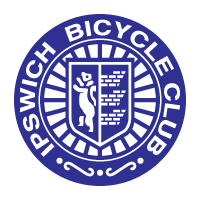Social Ride Leader Guidelines
IBC Social Rides essential guidance
- Helmets are obligatory for all Club rides (note no TT helmets)
- No fixed gear or time trial bikes
- Arrival at meeting point car park no later than 8.45am for arranging groups
- 9am roll out
-
- A lead rider must make him\herself known within their group prior to starting the social ride
- Basic IBC rules for group safety on the roads
a. Hand signals (stop, slowing, uneven surface, traffic obstruction, left/right turn)
b. Voice commands (road obstacles, stopping, slowing, vehicle up, vehicle down, mechanical,
turning left, turning right)
c. At no point should half wheeling be accepted
d. Navigation. Explain a brief route of the direction of travel for the days ride
e. Passing messages. Explain the importance of everyone passing message back and forwards
along the group
-
- Ride discipline
a. Maximum group sizes; 10. This number should be adhered to unless
absolutely necessary (at sole discretion of the lead rider).
Green rides (held the first Saturday April-September) requires:
a. Maximum of 8 new riders
b. When available two lead riders per group
c. Groups are to ride two abreast where possible and single file where required
d. Keep the ride at a controlled pace to ensure all riders complete it together
e. Keep a controlled pace when climbing and descending hills keeping the group as one unit
f. Support weaker riders encouraging them on more difficult parts of the route
g. Junction discipline ensuring the group enters and leaves a junction in a safe way as one unit
h. If the group gets split the leader is to ensure the remaining riders pull over in a safe place to enable the riders to re-group
-
- Ride etiquette
a. Keep under control any rider that may demonstrate aggressive behaviour and bad language while
riding
b. Topics of conversation are not to offend anyone riding or at café stops given riders are
representing their Club in public
c. Lead riders to move around the groups talking to riders ensuring there are no issues. Lead riders
are asked not to sit on the front for the entirety of a ride but encourage all others to share turns (see
‘through-and-off’ and rotation below)
d. All groups should follow a ‘no drop’ rule. However, if a rider is struggling to keep with the rest of
the ride they may be asked to return from the cafe stop with a more suitable group
-
- Bike handling
a. Talk new riders through the reasoning why voice and hand commands are so important
b. Explain the importance of riding as a group and how it can help cover a lot more distance at a
higher speed
c. Rotate riders on the front of a group ride to gain experience
d. Where possible use ride techniques such as ‘through-and-off’ (when single file) and “rotation”
(when riding two abreast). Both are encouraged for all ride groups (whether blue, red or black) to
improve individual rider and group skills.
-
- Navigation
a. Lead riders should be made aware of any road closures/works where possible
b. If possible one rider per group will have a GPS navigation device
c. Lead riders should have the full address and phone number of the cafe stop
d. Lead riders should give a brief description of the route the group is about to undertake
-
- Ride Admin
a. Lead riders will ensure each member of the group has a current club membership card on their
person with legible emergency contact details. In the event a card is forgotten, a temporary card
must be filled in and a replacement sourced from club membership secretary prior to next ride. Any
lapsed members are still able to ride by paying a day membership of £1 to the membership
secretary and would be required to fill in a temporary card.
b. Ensure all riders have the correct rider gear (helmet, puncture repair/spare tube etc)
c. Hydration/food. Talk to riders to ensure they have appropriate food and drink for the ride they are
about to undertake, and encourage these to be consumed during the ride
d. Ensure all riders have the appropriate clothing for the weather conditions on the day of the ride
e. Social Ride Secretary to publish any cafe location address on weekly updates to ensure all riders
have geographical awareness of the ride on the day
f. Where possible each group should have a first aid trained rider with recommended basic first aid
kit
-
- Lead rider selection
a. Candidate should make him/herself known to a lead rider who will then discuss with SSR
secretary
b. Candidate receives a copy of IBC Ride Rules and IBC Lead Rider Guidelines
c. Candidate must be able to give verbal directions of the route to a senior lead rider, and
demonstrate a basic ride brief for the group going out.
d. Candidate carries out a minimum of two rides with mentor help, one blue group and one red group
depending on capability
e. Senior lead rider assesses candidates lead rider capability on an assessment ride
f. If required, carry out more mentoring for candidate and assess again
g. A candidate becomes a lead rider and takes their own ride out
-
- Rider’s group selection
a. Riders new to group riding skills should start on a Green ride
b. Riders with a small amount of knowledge of group riding should start with a Blue ride
c. Riders moving from another club with basic knowledge of group riding can chose to start between
Blue or Red group depending on fitness level
d. Once a rider can demonstrate sufficient fitness with an acceptable level of group riding skill they
are advised to speak to their lead rider who will confirm they are ready to move to the next group
See the following diagrams for advice on ride discipline when group riding IBC Road rules 1.1
